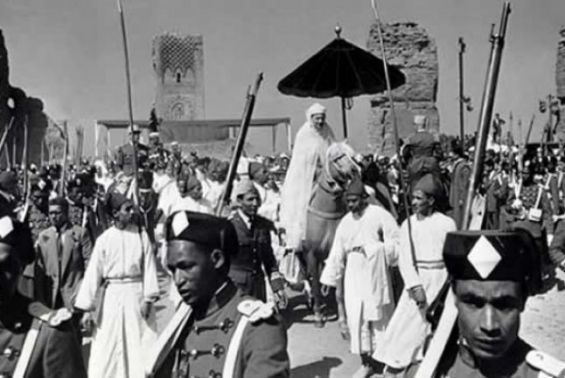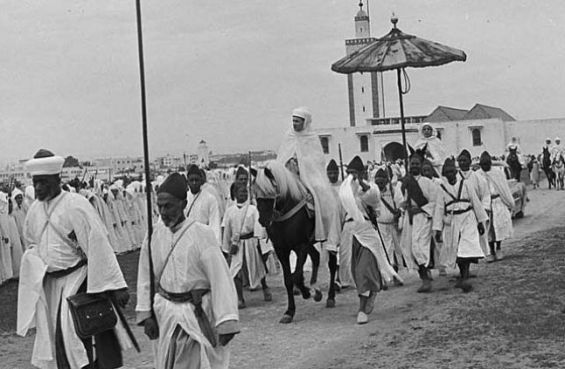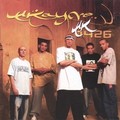On Tuesday, June 30th, Moroccans will be celebrating the Throne Day, commemorating the day of the King’s accession to the throne. The holiday is an annual ceremony that was introduced years ago.
According to history books, the Throne Day, or Eid al-Arsh, is Morocco’s first national feast. But who started the tradition and why ?
The story of the Throne Day started in the early 1930s, when Moroccan nationalists felt that they had to create their own national symbols to counter the ones imposed by the French colonizer.
«Nationalists countered the symbols and rituals Lyautey (first French Resident-General in Morocco) had reinvented for the Makhzan» and worked on «inventing their own symbols of Moroccan unity», wrote Jonathan Wyrtzen in his book «Making Morocco: Colonial Intervention and the Politics of Identity» (Cornell University Press, 2016).
Creating nationalist symbols and rituals
Nationalists knew that Morocco’s independence would come with belongingness. Based on this belief, they started their campaign by commemorating the petition against the Berber Dahir, introduced by the French to facilitate their takeover of the Berber tribes' property.
Their project included the crafting of «a national liturgical calendar of dates affiliated with national identity and resistance», Wyrtzen recalled.
Indeed, Morocco’s nationalists started by commemorating said Dahir on May 16, «organizing gatherings at mosques (…) closing stores in medinas, circulating petitions, and sending scores of telegrams» to protest the laws in both Rabat and Paris, the same book added.
These endeavors were later followed by a brave move that was inspired by the great idea of an Algerian writer. In 1933, and in an attempt to celebrate the sultan’s accession to the throne, nationalists decided to «invent» an annual holiday for that purpose. The feast was set for November 18th, almost six years after Mohammed ben Youssef was declared sultan.

But starting the tradition was not an easy task for Morocco’s nationalists. Celebrating the new holiday was first mentioned in an article published by renowned nationalist Mohamed Hassan Ouazzani, who is also the founder of Morocco’s first nationalist French-language newspaper L'Action du Peuple.
In October 1933, Ouazzani «published a large picture of the sultan on the front page of L’Action du Peuple and announced an initiative to celebrate Eid al-Arsh», Wyrtzen wrote. Ouazzani's brilliant initiative was, in fact, derived from the idea of Mohamed ben Salah Missa, an Algerian journalist, writer and author who was living in Morocco.
In his book «Hayat wa Jihad» (Life and Jihad), Ouazzani acknowledged that the idea of creating the holiday was first mentioned by the Algerian writer, adding that he had the chance to share it with Moroccans, through his article.
Ouazzani’s initiative was well received by Moroccans and his plan to honor the sultan was taken very seriously by fellow nationalists. The same source indicates that an «organizing committee was formed» and «nationwide celebrations were planned that included the decoration of streets and markets with Moroccan flags, the closure of government institutions and official ceremonies».
A Throne Day to oust the French
Although the first year was not as successful as planned, the second edition of the feast made was a victory. In 1934, the French administration in Morocco allowed the celebrations and turned it into an official holiday.
In addition to honoring the Moroccan sultan, nationalists wanted to serve other agendas through the creation of the holiday. According to the same historian, nationalists «exploited the opportunity to use officially banquets and gatherings to propagate their colonial message».
Quoting nationalism figure Allal al-Fassi, the historian indicates that «part of the motive for creating the Throne Day was a desire to reaffirm the nationalist movement’s allegiance to the sultan in order to counter» the French.
.jpg)
Meanwhile, Senem Aslan stressed in her book «Nation Building in Turkey and Morocco» (Cambridge University Press, 2015) that by «inventing new traditions and rituals such as the Feast of the Throne», nationalists tried to «mobilize people for demonstrations», using the sultan’s «religious legitimacy».
In a different analysis of the creation of the feast, Susan Gilson Miller indicated in her book «A History of Modern Morocco» (Cambridge University Press, 2013) that «the sultan, even without his specific consent, had been effectively appropriated as a symbol of the nation».
Regardless of the agendas the celebration served at the time, the Throne Day is seen as the «first truly civic celebration at the level of the nation», in the Kingdom, which managed, according to Aslan, to «transcend local events such as the religious festival».





 chargement...
chargement...













